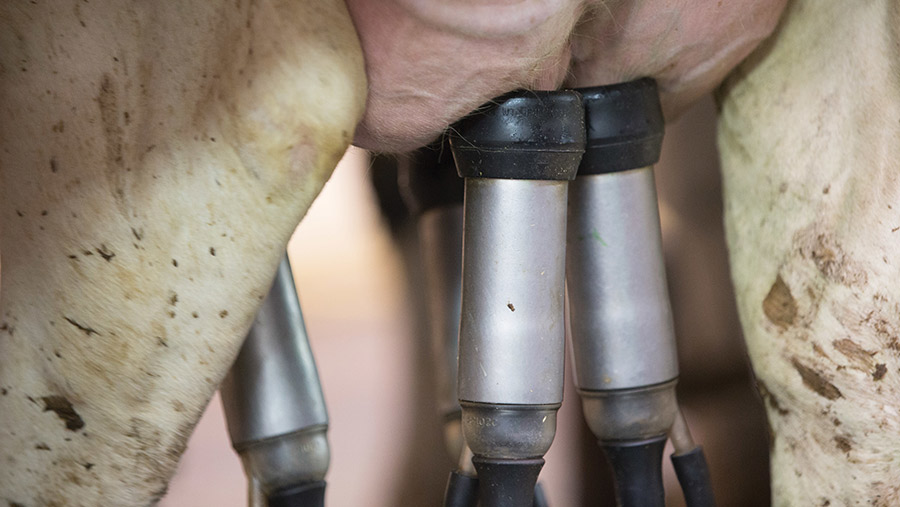Promar predicts another big jump in dairy cost of production
 © Tim Scrivener
© Tim Scrivener Cost of production on UK dairy farms could rise by an average of 5.4p/litre between March 2021 and March 2023, to 34p/litre, according to consultant Promar International.
Managing director Neil Adams predicts rising fertiliser, feed, energy and labour costs would contribute the most to the increase, but adds that it could be offset in part by higher milk prices.
“Not all of these will work through to affect profitability in the year to March 2022, but it will certainly have an effect in the year to March 2023,” he says.
See also: Why staff leave farming businesses and how to keep them
Based on the farm business accounts data of Promar clients, Mr Adams estimates that costs will rise 2.2p/litre in the year to March 2022, to 31.8p/litre, and by another 3.2p/litre by March 2023, an average increase of 5.4p/litre.
Small rise in profit a cow
The latest cost pressures follows a year when a sample of 465 farms analysed by Promar shows that average profit a cow rose by £33 to £226 in the 12 months to 31 March 2021.
This was due to a combination of a small increase in output and cost control across many areas, resulting in lower costs overall.
The figures should be read in the context of these being larger-than-average costed herds, and with milk yields well above the UK average of just over 8,000 litres.
Unequal effect
The costs forecasts do not factor in any interest rate rises, which Mr Adams believes are a real possibility, and the cost pressures won’t affect all businesses equally.
Promar farm business consultant Andrew Suddes says high-volume, low-margin systems are at greatest risk.
“If you are making 1p/litre on five million litres and costs have gone up by 5p/litre that’s a big problem,” he says.
Higher costs will be balanced by rising milk prices – the Promar Milkminder rolling average shows a 1.2-1.3p/litre increase since March 2021, to a current average of 31p/litre.
“The milk price will balance out cost pressures to some extent, but there is no certainty on that,” says Mr Adams.
Small rise in profit a cow
The new cost pressures come after a year when a sample of 465 farms analysed by Promar shows that average profit a cow rose by £33 to £226 in the 12 months to 31 March 2021.
This was due to a combination of a small increase in output combined with cost control across many areas, resulting in lower costs overall.
Promar costed herd results to 31 March 2021
- Average herd size: 240 cows
- Average milk yield: 9,400 litres a cow
- Bottom 25% variable costs were £1,725 a cow and overhead costs £1,491 a cow, compared with £2,975 dairy income from milk and calf sales
- Top 25% variable costs were £1,558 a cow and overhead costs £1,052 a cow against income of £3,224
- Top 25% made a profit of £614 a cow before subsidy and income from other enterprises
- Bottom 25% made a loss of £239 a cow – a gap of £843 a cow compared with top 25% profits
The top-performers achieved a higher output a cow while also controlling all costs better and managing bigger herds.
The current cost squeeze will affect the least-efficient farms much more due to credit and cashflow issues, Mr Adams warns.
“They are in a much more parlous state,” he says. However, he is optimistic about the future for dairying in the UK.
“We are one of the lowest-cost producers of milk in the world, with high production standards. Farmers can generally make good returns from dairying if they do the job well. I am genuinely very positive about dairying.”
Budgeting and planning must be done in excruciating detail, he advises, to allow farmers to understand the effect of cost pressures on their own business.
“People really do need to understand their marginal cost of production and build some sort of plan to address that,” he says.
